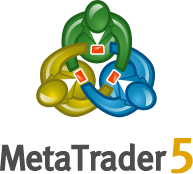What is Leverage?

Currency prices move every day because of economic news, political events, and global developments. Some currencies are more stable than others, so they move less. For example, the EUR/USD – the world’s most traded currency pair, usually moves about 100 to 150 pips a day, which is around a 1% change. But on days with big news, like U.S. jobs reports or decisions from the European Central Bank, the move can be as much as 200 to 300 pips.
Since daily price movements can be relatively small, traders use Leverage to boost both potential profits and risks.
Learn About Leverage

Leverage is simply the ability to control a larger trade with a smaller amount of money (called margin).
For example:
- • If EUR/USD rises by 100 pips (from 1.1305 to 1.1405) and you invested $1,000 without Leverage, you would make about $10.
- • But with 1:100 Leverage, each $1 you invest controls $100. So, your $1,000 would control $100,000 in the market. So, investing the same $1,000 would give you a $1,000 profit instead of $10.
Think of leverage like a loan for trading. If you have $1,000 and use 1:100 leverage, you’re trading as if you have $100,000. After you close the trade, the borrowed money is returned, and you keep any profit (or take any loss).
However, it’s important to remember that leverage works both ways. It can boost your profits, but it can also increase losses. If the market moves against you, high leverage can quickly trigger your Stop Loss and close your trade. That’s why beginners often start with low Leverage to learn proper risk management. More experienced traders may sometimes use higher Leverage to try to maximize their gains.
Leverage on the easyMarkets platform
easyMarkets offers competitive Leverage up to on its web platform and mobile app, giving you the flexibility to amplify your trading power while managing your risk effectively.
Our platform (web and mobile) features Guaranteed Stop Loss with No Slippage**, designed to protect your account even during fast-moving market conditions. This means your trades will close exactly at your Stop-Loss level, helping you avoid negative balances.
You can use leverage on different types of trades, including:
- Day trades
- Pending orders
- Options
When placing a trade, you choose the total trade amount, which includes both your invested margin and the Leveraged portion. The more risk you take compared to your margin, the higher the leverage. This affects your Stop-Loss level: the more risk you take, the closer your Stop Loss is to the market price. If the market moves against you and hits that level, your trade closes automatically to protect you.
*Leverage on the easyMarkets web and app is different for each instrument. You can find the full list of trading conditions here.
**Guaranteed Stop Loss with No Slippage is available only on the easyMarkets web and app platforms. Activate it with wider spread for total risk control.
Final thoughts
Leverage is a powerful tool that can enhance your trading potential when used wisely. Understanding how it works, and managing the risks that come with it, is key to building long-term success in the markets. With easyMarkets built-in risk management features, you can trade with greater confidence and control.

Currency prices move every day because of economic news, political events, and global developments. Some currencies are more stable than others, so they move less. For example, the EUR/USD – the world’s most traded currency pair, usually moves about 100 to 150 pips a day, which is around a 1% change. But on days with big news, like U.S. jobs reports or decisions from the European Central Bank, the move can be as much as 200 to 300 pips.
Since daily price movements can be relatively small, traders use Leverage to boost both potential profits and risks.














